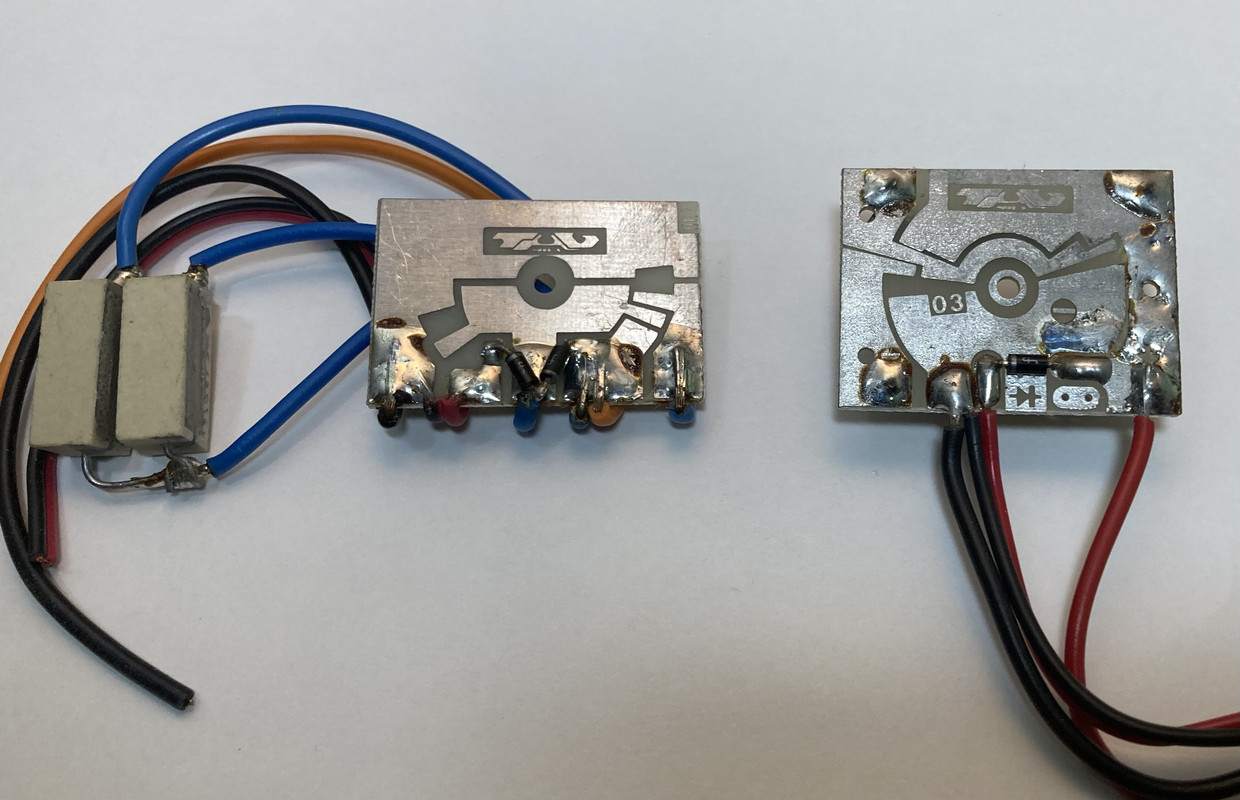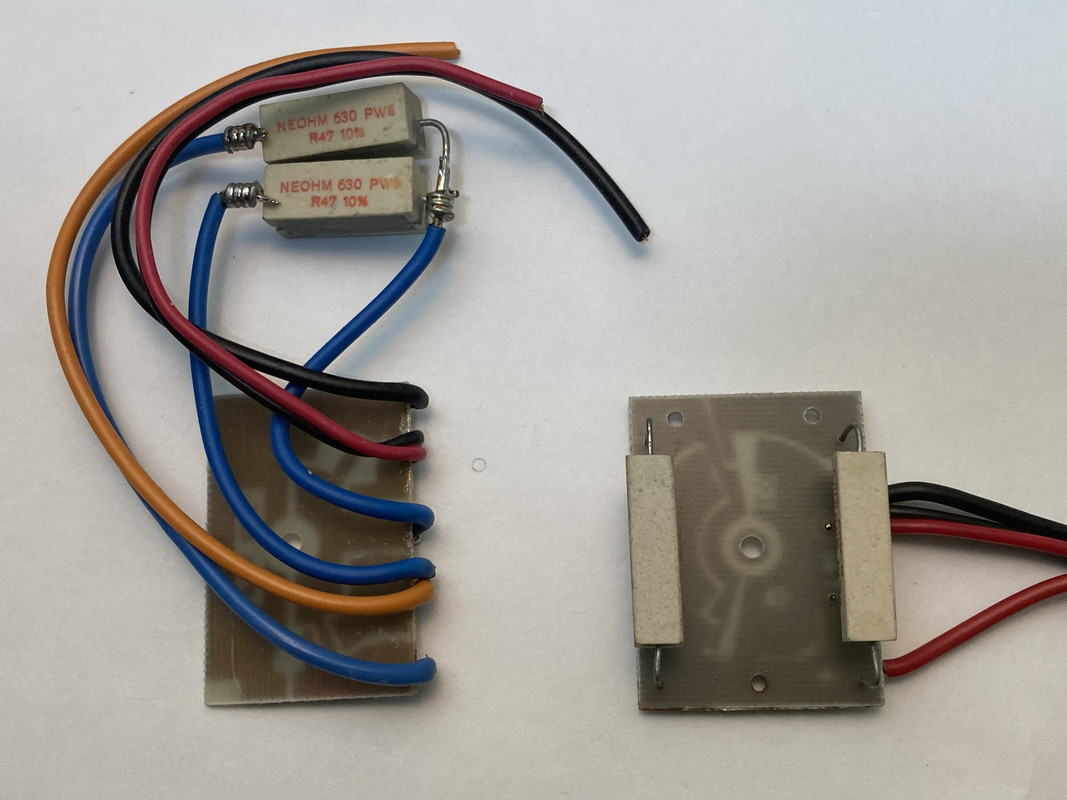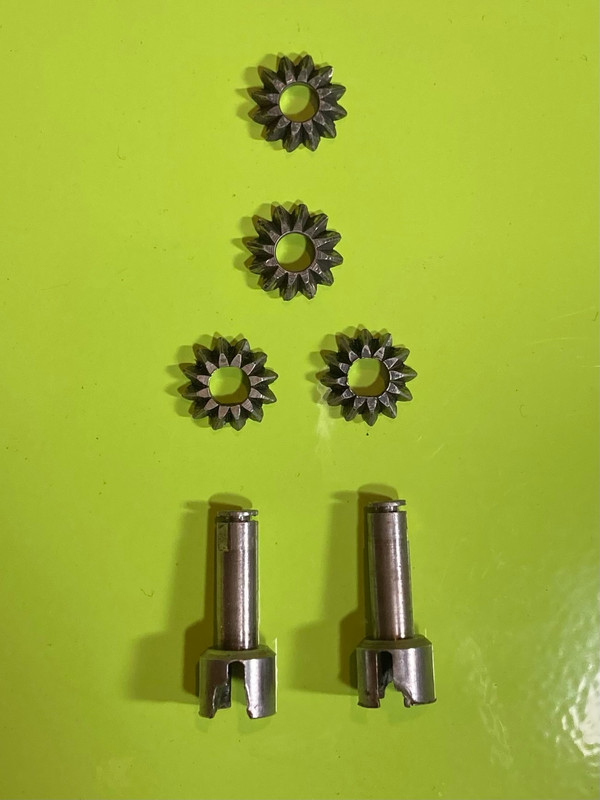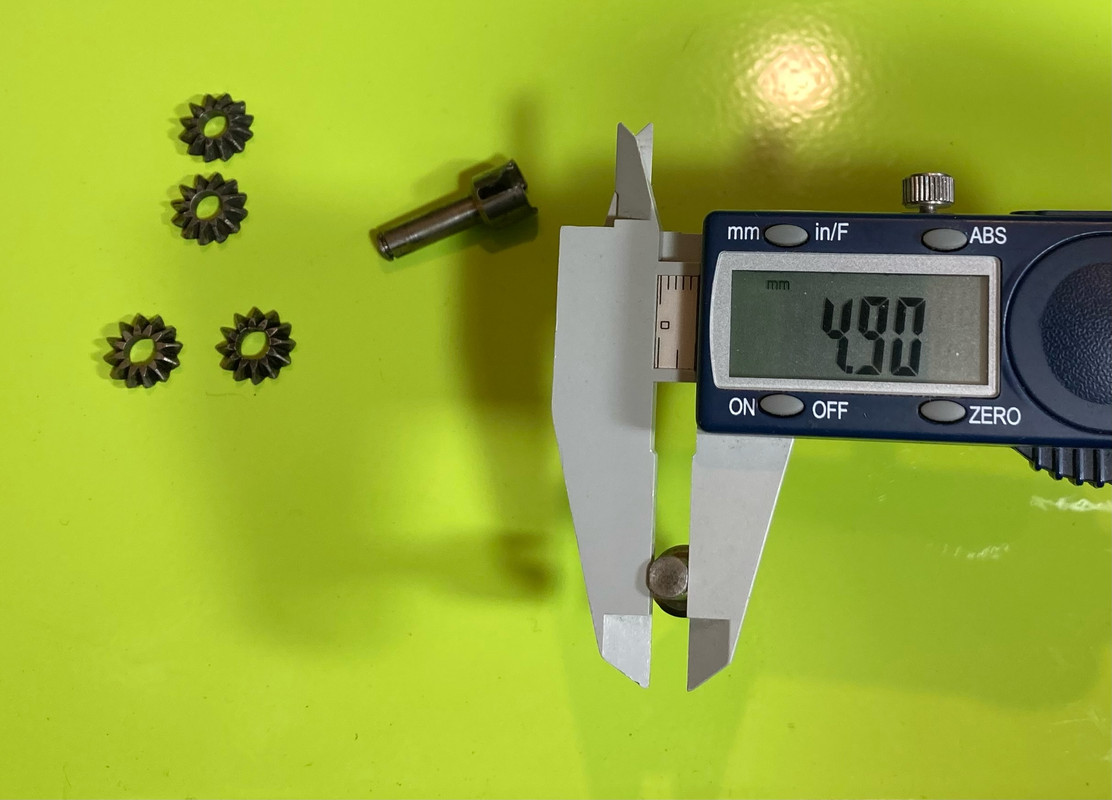Page 2 of 3
Re: SG Coyote differences
Posted: Fri Dec 25, 2020 4:00 am
by Dadio
Just out of curiosity what failed with the nylon diff crown gears ? Did they simply rip out the screws the held them to the diff or did they strip ?
Re: SG Coyote differences
Posted: Fri Dec 25, 2020 7:33 pm
by 1300GT
From what I've read, when the original plastic diff, crown and pinion gears were used, the failure point always seemed to be, either the diff gears shredding, or the gearbox pinions turning on their shafts as they simply slid on. When the pinions failed this in turn lead to the crown gears being mutilated. Some early running reports said that the stock 540 was able to destroy gears. When modifieds were used it was guaranteed.
The Australian distributor refused to sell any more Coyotes after the first batch went out and subsequently returned to his shop with wrecked gears. He contacted SG and told them of the problem. He wasn't the only one. TAG then machined the hardened steel alternative gears.
I did read in someone else's thread that they used the nylon crown gear with a steel pinion which still chewed up the crown gear.
I'm going to try the steel pinion/nylon crown gear in my Coyote. Just to see for myself. If it fails I have the hardened steel crown gears to replace them.
Re: SG Coyote differences
Posted: Mon Dec 28, 2020 4:55 am
by Dadio
Thanks , I did get a replacement gear set that had plastic crown gears but a metal pinion and metal diff gears so I'd support that they were sold that way at least for a time . one thing I did notice was that the mesh of the steel pinion was a lot tighter than it should be and I had to play about to get some lash , this could easily have destroyed the plastic crown gear , strangely it only happened with the front diff ? The back was just fine .
Re: SG Coyote differences
Posted: Mon Mar 28, 2022 7:51 pm
by GuidoOwl
I'm (slowly) starting to refurbish my cousin's VERY old Coyote 4WD: it's a first batch, with some broken parts, and I'm trying to update it to newer (and better) parts!

Anyway I can explain some other differences:
1) on older 4WD, all the wheels and tires were the same and equal to the rear ones of the newer kits;
2) I have the original front pinion gear (nylon made) and it counts 9T... while my rear one (steel made, and probably substituted after the destruction of the original one) is 10T... don't ask me in which way the car could be correctly used with 29/9 on front diff and 29/10 on rear diff;
3) I have 3x axle shafts (probably the original ones) that are 66mm total length and 61mm pin-to-pin, while I have 2x axle shafts (probably newer, after breaking older one) that measures 68mm total and 62mm pin-to pin... all are 3.2mm of diameter, with 6mm ball-end.
A question: my one has white wheels, but on the box (older type) the image shows black wheels... has anyone a photo of black wheels?
Re: SG Coyote differences
Posted: Mon Mar 28, 2022 7:53 pm
by GuidoOwl
1300GT wrote: ↑Thu Dec 24, 2020 8:23 pm
Bottom chassis spacer. The Lexan underguard screws to this piece. I can't tell if the top one is an early version as it came in a later 2WD kit. The bottom one is definitely more common.
I can confirm that the top one is an early version: I have it in my 4WD kit!
Re: SG Coyote differences
Posted: Mon Mar 28, 2022 7:59 pm
by GuidoOwl
1300GT wrote: ↑Mon Jun 01, 2020 12:22 am
Upper suspension arms. I don't know if there is early and later with these. In the two wheel drive kits you get a pair of the two different types. If you look closely at the photos you can make out the "R" and "F" on each. The "F" arm is swept back more to increase castor on the two wheel drives. I think the early four wheel drive kits came with four of the same upper arms.
No, the parts in the image are both later specs (Front and Rear ones): it's clear from the empty cylinder that was used as reinforcement (and, if you want to check, they should use M4 turnbuckles)! Early design of 4WD upper arms was exactly the same (different between front and rear) but without empty cylinder and with M3 turnbuckles. If it is useful, I can perform some photos in the weekend!
Re: SG Coyote differences
Posted: Wed Mar 30, 2022 7:03 am
by 1300GT
Thanks for the information.
Yep, post some pictures if possible.
Re: SG Coyote differences
Posted: Fri Jan 27, 2023 9:13 am
by BattleTrak
Two different mechanical speed controllers..


Re: SG Coyote differences
Posted: Sat Jan 28, 2023 9:42 pm
by 1300GT
I thought I'd add more about the diff gears and output shafts. I've included the TAG Pro 10 versions here as they're interchangeable with the Coyote.
Early Coyote. Plastic internal gears. The output shafts are silver and have two flats machined into them to engage the gears and a rounded end in the drivecup slot. The spider gears spin on the round steel shaft. The gears have fairly large teeth.
Later Coyote. Hardened steel gears. The output shafts have a hard black coating (which is partially worn in this shot) and still use the two flats to engage the gears. The drivecups have a square ended slot. The spider gear shaft is the same. Note the finer teeth.
Pro 10. Cast metal gears, non-ferrous. The chromed output shafts are slightly longer than the Coyote's and splined to engage the gears. The spider gear shaft is machined down in the middle to accommodate the longer output shafts. Note the larger teeth.
There are two different versions of the Pro 10 output shafts. The ones I have are the optional lightweight hotup versions from TAG. The stock versions are not chromed and presumably slightly heavier.
Re: SG Coyote differences
Posted: Sun Jan 29, 2023 4:05 am
by Dadio
It's odd that Tag opted to go to die cast alloy for the latest version , an investment to make the moulds but cheaper in the long run ? I'd have thought they would stick to the steel ones as the cost of machining new moulds and redesigning the splined output shafts must have been quite high ?
Re: SG Coyote differences
Posted: Sun Jan 29, 2023 1:23 pm
by BattleTrak
Great breakdown of these gears! The cast/pot metal ones have been a curiosity for me..like the similar ring gear. The ones I have are cast a bit rough with flash, so they would need some file work to be smooth.
I will add this 4th version.. Hardened steel gears but 12 tooth like the plastic & cast…Silver outdrives. Notice how shallow the flat spots are, it’s hard to see and the shaft only measures 4.9mm across there. These came off of a used fwd Coyote.


Re: SG Coyote differences
Posted: Sun Jan 29, 2023 7:58 pm
by 1300GT
Dadio wrote: ↑Sun Jan 29, 2023 4:05 am
It's odd that Tag opted to go to die cast alloy for the latest version , an investment to make the moulds but cheaper in the long run ? I'd have thought they would stick to the steel ones as the cost of machining new moulds and redesigning the splined output shafts must have been quite high ?
I'd say so. My best guess would be that they went to all the trouble to lower the weight of the diff gears. Which sounds weird but when you look at the optional parts list there's three lightweight diff options on it. I've copied (stolen)

this poster from Martin's thread.
Under the "Tuning kit" heading you can make out the lightweight diff options which would lower the rotating mass somewhat. I compared a hardened steel crown (42grams) against a lightweight aluminium one(17grams). Quite a big difference.
I would like to see the lightweight chassis option. How could you make the chassis rails any lighter without sacrificing chassis strength? Thinner material? They'd bend even quicker.

Re: SG Coyote differences
Posted: Sun Jan 29, 2023 8:04 pm
by GoMachV
Lightweight chassis option….

Re: SG Coyote differences
Posted: Sun Jan 29, 2023 8:10 pm
by 1300GT
Isn't that the seven cell special chassis that you had on FB some time ago? Really nice Jeff!

Re: SG Coyote differences
Posted: Sun Jan 29, 2023 8:15 pm
by GoMachV
A friend in Hong Kong commissioned this one. I don’t recall the specifics of the chassis, but I believe the 3 cell was able to be shifted fore or aft for balance, or you could use the outer holes for the fourth cell. I’d have to look at the drawing and see for sure but that’s what I recall.



